 W
WTai chi, short for T'ai chi ch'üan or Tàijí quán (太極拳), sometimes colloquially known as "Shadowboxing," is an internal Chinese martial art practiced for defense training, health benefits, and meditation.
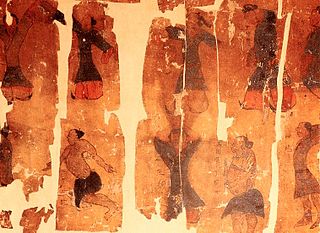 W
WDaoyin is a series of body and mind unity exercises practiced as a form of Daoist neigong to cultivate jing (essence) and direct and refine qi, the internal energy of the body according to Traditional Chinese medicine. These exercises are often divided into yin positions, lying and sitting, and yang positions, standing and moving. The practice of daoyin was a precursor of qigong, and was practised in Chinese Taoist monasteries for health and spiritual cultivation. Daoyin is also said to be a primary formative ingredient in the well-known "soft styles" of the Chinese martial arts, of Taiji quan. and middle road styles like Wuxingheqidao.
 W
WThe jian is a double-edged straight sword used during the last 2,500 years in China. The first Chinese sources that mention the jian date to the 7th century BCE, during the Spring and Autumn period; one of the earliest specimens being the Sword of Goujian. Historical one-handed versions have blades varying from 45 to 80 centimeters in length. The weight of an average sword of 70-centimetre (28-inch) blade-length would be in a range of approximately 700 to 900 grams. There are also larger two-handed versions used for training by many styles of Chinese martial arts.
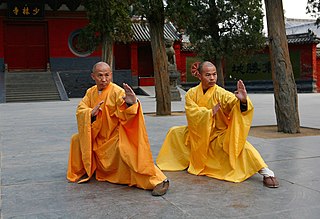 W
WList of T'ai chi ch'uan forms, postures, movements, or positions in order of number of forms:
 W
WPushing hands, Push hands or tuishou is a two-person training routine practiced in internal Chinese martial arts such as Baguazhang, Xingyiquan, Taijiquan, and Yiquan. It is also played as an international sport akin to Judo, Sumo and wrestling, such as in Taiwan, where the biannual Tai Chi World Cup is held.
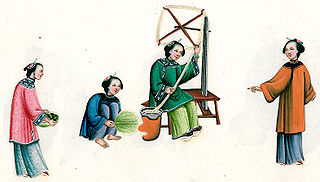 W
WSilk reeling refers to a set of neigong movement principles expressed in traditional styles of t'ai chi ch'uan (太極拳), but especially emphasized by the Chen 陳 and Wu 吳家 styles. The name derives from the twisting and spiralling movements of the silkworm larva as it wraps itself in its cocoon, and to the metaphorical principle of "reeling the silk from a silk worm's cocoon". Dozens of cocoons are placed into boiling water. A single strand comes from each cocoon. In order to draw out the silk successfully the action must be smooth and consistent without jerking or changing direction sharply. Too fast, the silk breaks, too slow, it sticks to itself and becomes tangled. The pot is then stirred and each cocoon spins as the silk unwinds. Each filament twists through a single point to become thread. The thread is usually pulled over a wheel and wound onto a spool. Thus silk reeling movements are rotations within rotations that must be continuous, cyclic, focused, twisting and untwisting actions. Silk reeling is a core method of movement and is trained throughout the curriculum including solo forms, individual solo exercises, as well as in two-person work.
 W
WSingle Whip is a common posture found in most forms of t'ai chi ch'uan. Typically at the end of the posture the left hand is in a palm outward push and the right hand held most commonly in the form of a hook or closed fist. Notable exceptions are the Single Whip in Sun-style and Wu/Hao style t'ai chi ch'uan which finish with both hands open, palms outward.
 W
WIn many extant t'ai chi classic writings the dependence of t'ai chi ch'uan on Chinese philosophy is acknowledged. T'ai chi teachers have historically asserted that the principles of tai chi chuan practice can be applied to a student's lifestyle.
 W
WThe T'ai chi Classics, or Taijiquan Classics, is a collection of over 100 articles on the Chinese martial art of t'ai chi ch'uan written by the art's master practitioners over the centuries. They cover everything from the underlying Taiji philosophical principles, to methods of practice and application. Previously passed down in secret from generation to generation in whole or in parts through various lineages, they achieved classical status as they became public starting in the mid-1930s. Together they now serve as the single authoritative guide for the development and usage of Taijiquan skills. Written mostly in classical Chinese, they are used today mostly by the serious martial art practitioners of modern 6 Lineages that all trace their lineages to the ancient style taught by the Chen family and Yang family starting in the mid-19th century.
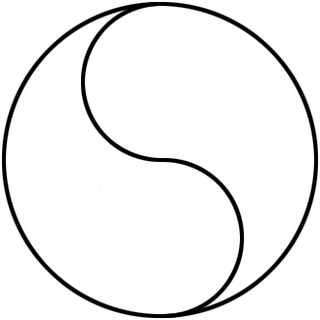 W
WTaiji is a Chinese cosmological term for the "Supreme Ultimate" state of undifferentiated absolute and infinite potential, the oneness before duality, from which Yin and Yang originate, can be compared with the old Wuji.
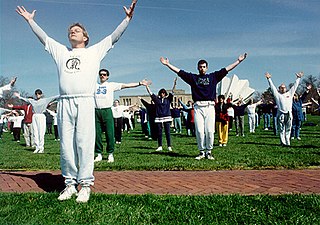 W
WWorld Tai Chi and Qigong Day (WTCQD), also spelled World T'ai Chi and Ch'i Kung Day, is an annual event held the last Saturday of April each year to promote the related disciplines of T'ai chi ch'uan and Qigong in nearly eighty countries since 1999.
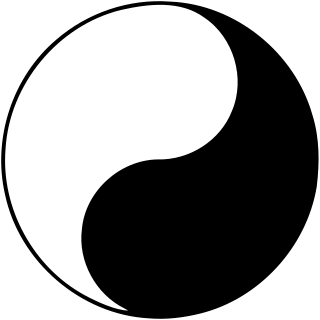 W
WIn Ancient Chinese philosophy, yin and yang is a concept of dualism, describing how obviously opposite or contrary forces may actually be complementary, interconnected, and interdependent in the natural world, and how they may give rise to each other as they interrelate to one another. In Chinese cosmology, the universe creates itself out of a primary chaos of material energy, organized into the cycles of Yin and Yang and formed into objects and lives. Yin is the receptive and Yang the active principle, seen in all forms of change and difference such as the annual cycle, the landscape, sexual coupling, the formation of both men and women as characters and sociopolitical history.